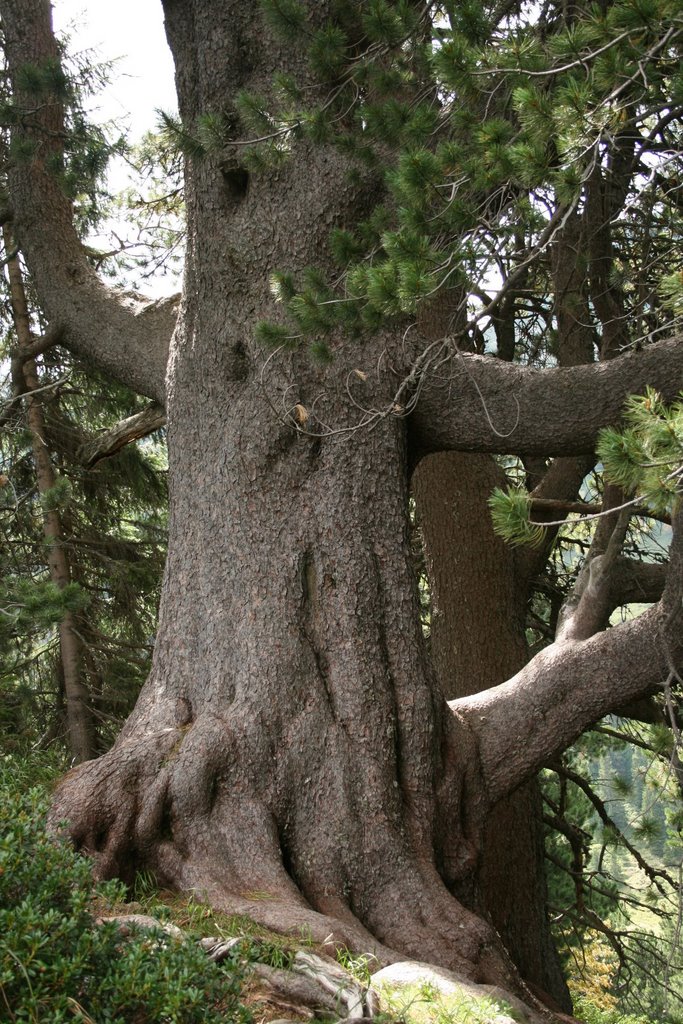
The Lion King
This post is also available in:
 Italiano (Italian)
Italiano (Italian)
The Lion King
Pinus cembra (Pinaceae)
The impressive majesty of this stone pine appears when you get to its feet: the tree has a 17.7-ft circumference and is 65.6-ft tall. This beautiful specimen is believed to be some 700-800 years old.
The main branches start from the huge trunk at different heights, first bending and then straightening upwards – thus giving the tree a peculiar candlestick shape. The main trunk and the branches expand further, forming a round crown with a hundred tops.
At some point, this tree was about to be cut, but Mr Leone, a local woodsman, refused to do it: the stone pine was just too beautiful. Hence the name of this centuries-old specimen of Pinus cembra (“Leone” means “Lion”).
Next to it, there’s another specimen, which has now reached a diameter of about 3.2 ft.
HOW TO GET THERE
From Castello, Pian della Fava, reach Manghen Refuge and take trail no. 322; at 6.725 ft, leave the path and take another one that leads to Malga Buse. Once you’ve reached this mountain hut, continue eastwards, looking for the sign which points at the magnificent tree.
BOTANICAL CARD
According to some scholars, the stone pine comes from northern Asia; in the Tertiary and Quaternary era, this species eventually reached Europe, where it was able to survive the glaciations in Switzerland, Austria and northern Italy. Today, it is widespread especially in Europe in the Austrian Alps.
It is a typical species of the alpine and subalpine environments, between 4.593 and 7.545 ft altitude. It grows well in areas with a continental climate, featuring a wide temperature range and abundant rainfall in the summer. The stone pine prefers fairly deep, cool-humid and moderately acid soils, growing well on both calcareous and siliceous ground.
The wood of the stone pines is fragrant and resinous, once used for the construction of furniture, thanks to its resistance to woodworms; today, it’s still widely acknowledged as valuable wood for carvings and sculptures.
From its needles, buds and twigs it is possible to extract an essential oil with balsamic, anti-catarrhal and antiseptic properties.
Photo source: http://mapio.net/pic/p-22490022/
This post is also available in:
 Italiano (Italian)
Italiano (Italian)
Contatti
